Abstract
Peak acid outputs in normal subjects and patients with duodenal and gastric ulcer were significantly (and similarly) correlated with body weight and calculated lean body mass.
Expression of measurements of peak acid output as a function of body weight or lean body mass lessened but did not abolish the significance of the situation that men with no dyspepsia or gastric ulcer secreted more acid than women; the significant sex difference in duodenal ulcer was, however, abolished.
Data for peak acid output have been tabulated, not only as m-equiv/hr but also as μ-equiv/kg body weight/hr and μ-equiv/kg lean body mass/hr. On the basis of the present data no change is suggested in the current expression of peak acid output as m-equiv/hr since expression of acid output as a function of body weight or lean body mass improves neither the variability nor the diagnostic discrimination of measurement of peak acid output.
Full text
PDF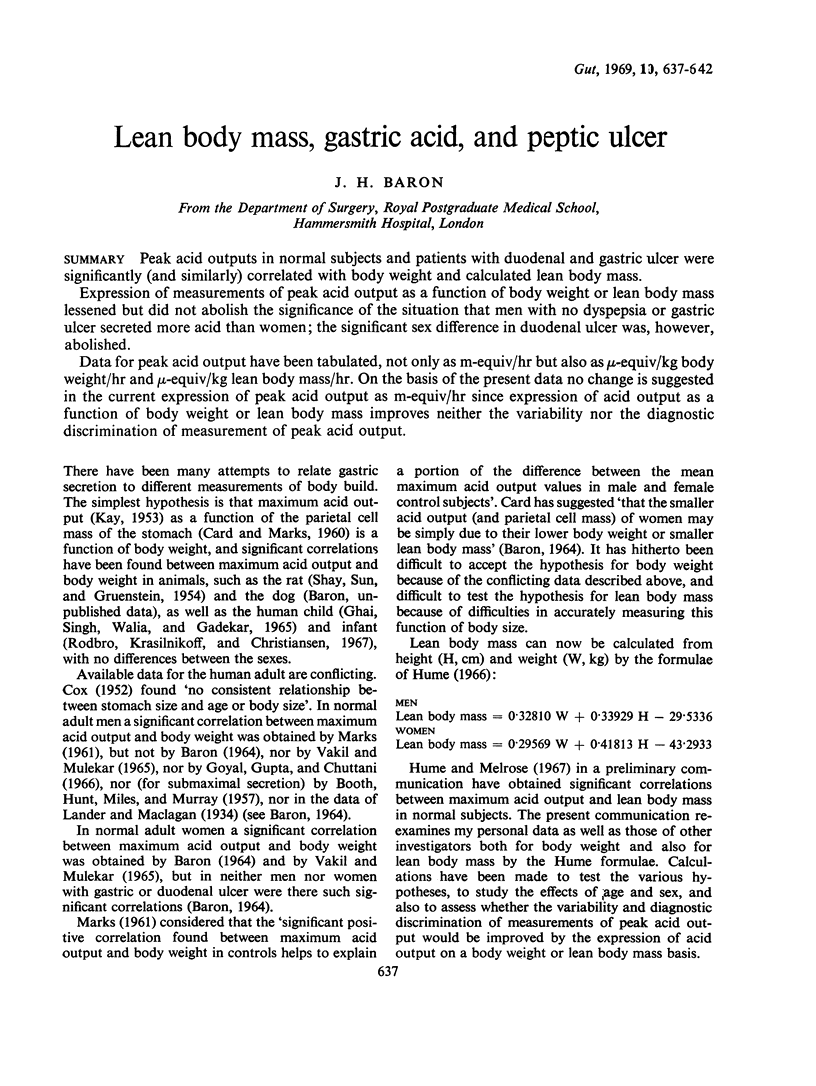
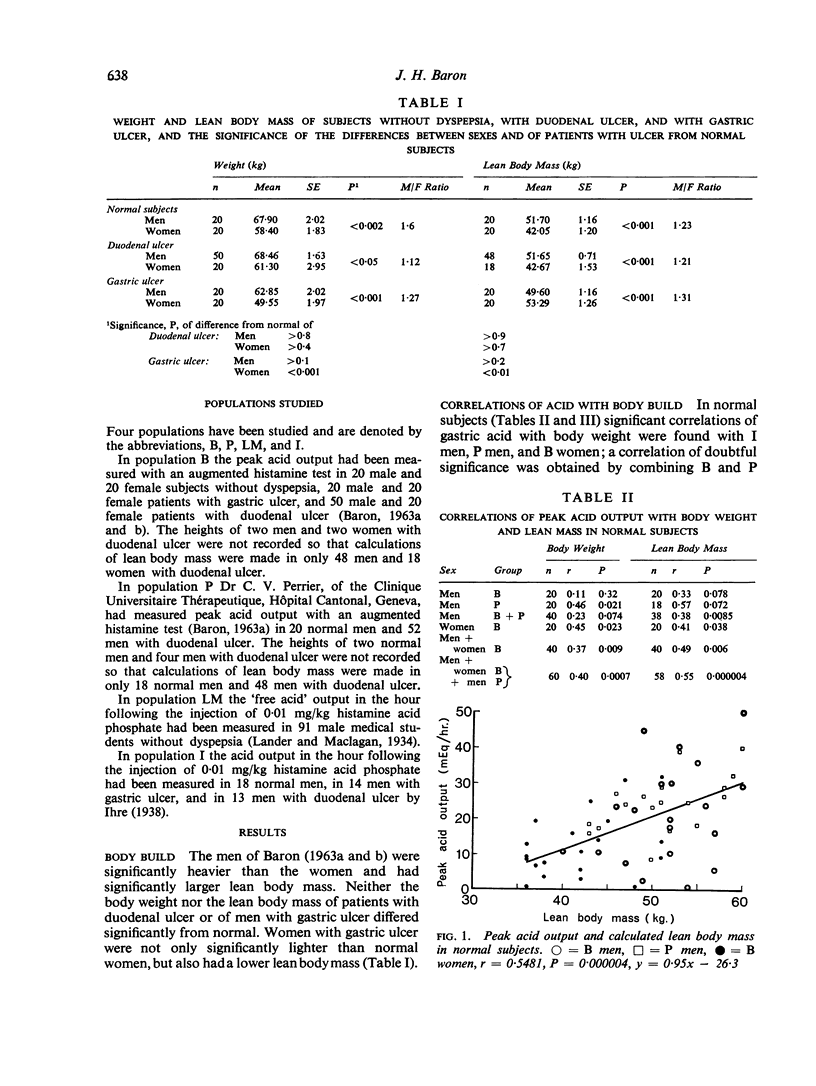
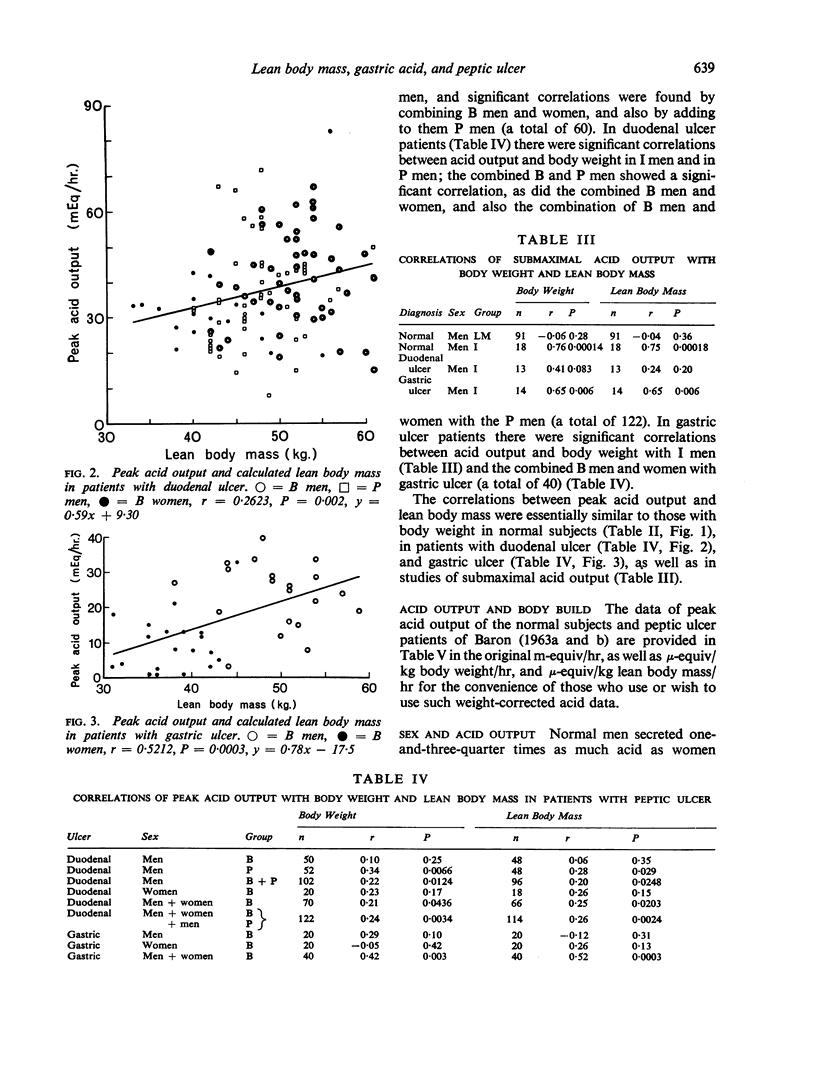
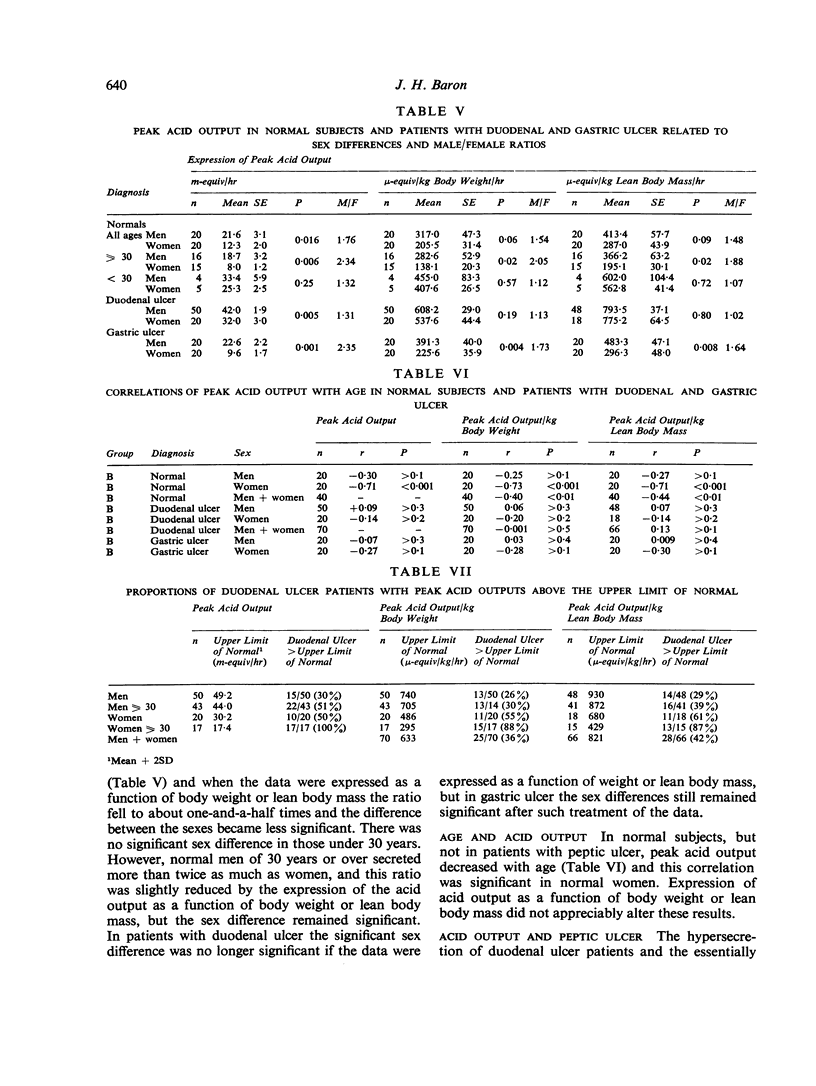
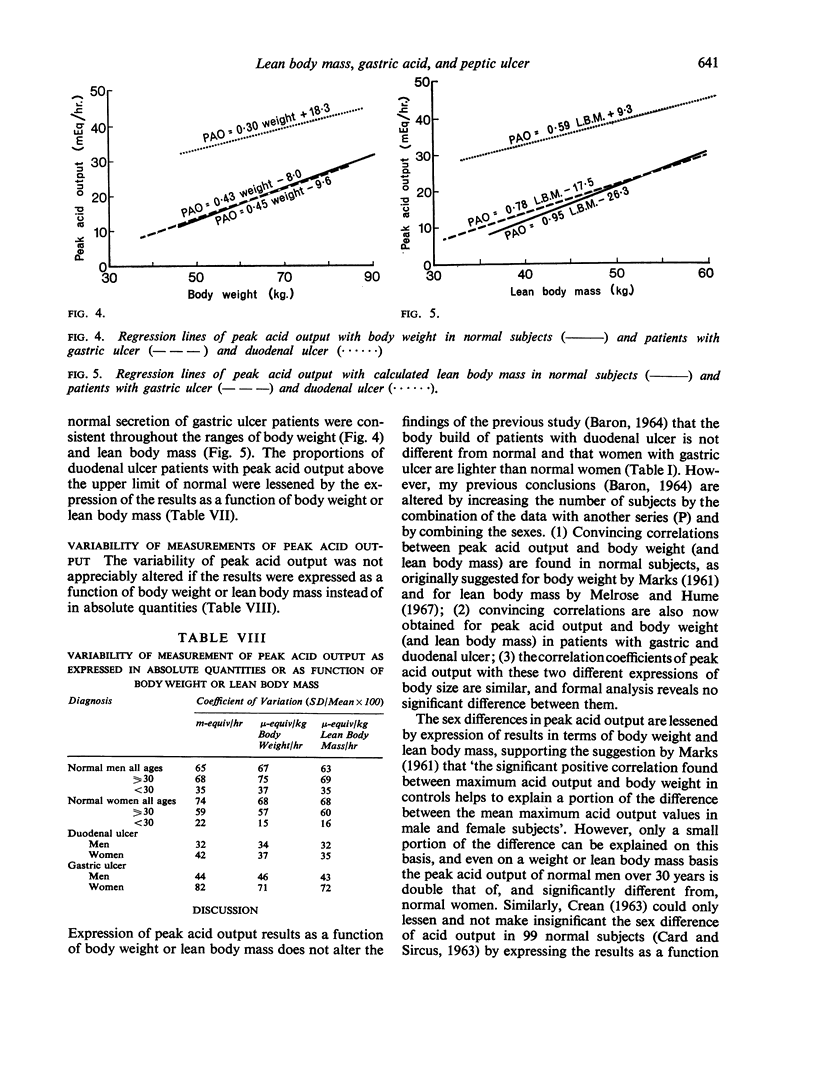
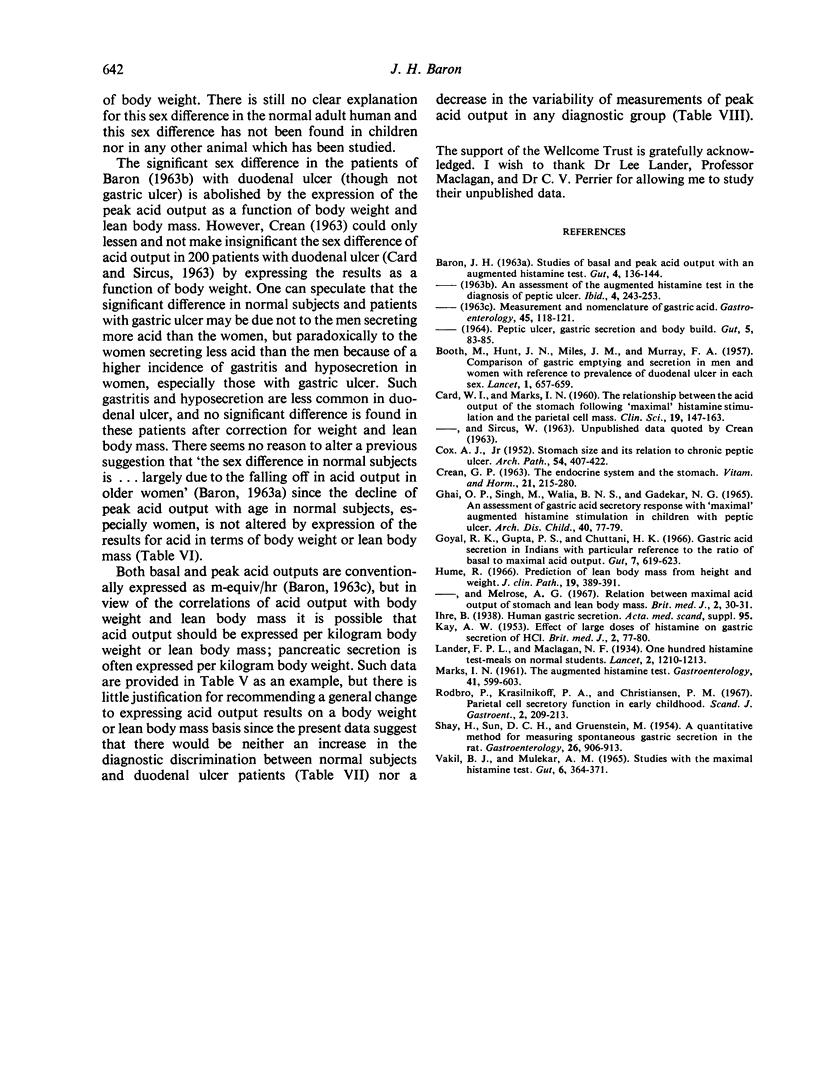
Selected References
These references are in PubMed. This may not be the complete list of references from this article.
- BARON J. H. Studies of basal and peak acid output with an augmented histamine test. Gut. 1963 Jun;4:136–144. doi: 10.1136/gut.4.2.136. [DOI] [PMC free article] [PubMed] [Google Scholar]
- BOOTH M., HUNT J. N., MILES J. M., MURRAY F. A. Comparison of gastric emptying and secretion in men and women with reference to prevalence of duodenal ulcer in each sex. Lancet. 1957 Mar 30;272(6970):657–659. doi: 10.1016/s0140-6736(57)91119-4. [DOI] [PubMed] [Google Scholar]
- CARD W. I., MARKS I. N. The relationship between the acid output of the stomach following "maximal" histamine stimulation and the parietal cell mass. Clin Sci. 1960 Feb;19:147–163. [PubMed] [Google Scholar]
- COX A. J. Stomach size and its relation to chronic peptic ulcer. AMA Arch Pathol. 1952 Nov;54(5):407–422. [PubMed] [Google Scholar]
- CREAN G. P. THE ENDOCRINE SYSTEM AND THE STOMACH. Vitam Horm. 1963;21:215–280. doi: 10.1016/s0083-6729(08)60242-3. [DOI] [PubMed] [Google Scholar]
- GHAI O. P., SINGH M., WALIA B. N., GADEKAR N. G. AN ASSESSMENT OF GASTRIC ACID SECRETORY RESPONSE WITH 'MAXIMAL' AUGMENTED HISTAMINE STIMULATION IN CHILDREN WITH PEPTIC ULCER. Arch Dis Child. 1965 Feb;40:77–79. doi: 10.1136/adc.40.209.77. [DOI] [PMC free article] [PubMed] [Google Scholar]
- Goyal R. K., Gupta P. S., Chuttani K. H. Gastric acid secretion in Indians with particular reference to the ratio of basal to maximal acid output. Gut. 1966 Dec;7(6):619–623. doi: 10.1136/gut.7.6.619. [DOI] [PMC free article] [PubMed] [Google Scholar]
- Hume R., Melrose A. G. Relation between maximal acid output of stomach and lean body mass. Br Med J. 1967 Apr 1;2(5543):30–31. doi: 10.1136/bmj.2.5543.30. [DOI] [PMC free article] [PubMed] [Google Scholar]
- Hume R. Prediction of lean body mass from height and weight. J Clin Pathol. 1966 Jul;19(4):389–391. doi: 10.1136/jcp.19.4.389. [DOI] [PMC free article] [PubMed] [Google Scholar]
- KAY A. W. Effect of large doses of histamine on gastric secretion of HCI; an augmented histamine test. Br Med J. 1953 Jul 11;2(4827):77–80. doi: 10.1136/bmj.2.4827.77. [DOI] [PMC free article] [PubMed] [Google Scholar]
- MARKS I. N. The augmented histamine test. Gastroenterology. 1961 Dec;41:599–603. [PubMed] [Google Scholar]
- Rodbro P., Krasilnikoff P. A., Christiansen P. M. Parietal cell secretory function in early childhood. Scand J Gastroenterol. 1967;2(3):209–213. doi: 10.3109/00365526709180071. [DOI] [PubMed] [Google Scholar]
- SHAY H., SUN D. C., GRUENSTEIN M. A quantitative method for measuring spontaneous gastric secretion in the rat. Gastroenterology. 1954 Jun;26(6):906–913. [PubMed] [Google Scholar]
- Vakiland B. J., Mulekar A. M. Studies with the maximal histamine test. Gut. 1965 Aug;6(4):364–371. doi: 10.1136/gut.6.4.364. [DOI] [PMC free article] [PubMed] [Google Scholar]


